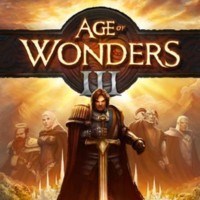Age of Wonders 3: Basic information

Combat is an inseparable element of Age of Wonders III. You will fight many skirmishes, by attacking independent group, as well as battles and city sieges. It is very important, therefore, that you master the basic aspects of combat, which will prove very helpful in fight.
Apart from the units and their skills, tactics and the available skills will prove very important, which can very often tip the scales. To initiate a battle, two enemy armies need to meet on one hex. As the attacking party, you can still retreat but, in the case in which you are the defender, the only thing that you can do is fight yourself or let the computer fight the battle (simulation mode). Every battle can be participated by up to 7 units because not more than 6 fields border one hex. The battle will be fought on the tactical map, in the case in which you decide to fight it yourself. This map, just like the strategic map, has been divided into hexes and turns (rounds). Te defending party has the right to move as the first. After the battle ends, you will be shown a report on who won and about the losses on both sides. In the case in which you go for the simulation option, you will receive the report immediately.
Sills of units
Apart from the basic capabilities, such as movement and dealing damage, each party has, often, a number of skills, which often increase their combat value. The list of the available skills can be looked up in the description of the unit ( you only need to click on its miniature on the strategic map). Units can receive new skills by means of research or by upgrading the leader. Some of the skills are very powerful, which is why they have cooldown, which means that they cannot be used in each turn of the battle. There also are the skills that can also be used once per battle. Therefore, it is worth knowing the capabilities of yours and your enemy's parties, because the correct usage of them can decide about the entire battle, and is often better than the "regular" attack.
Action points
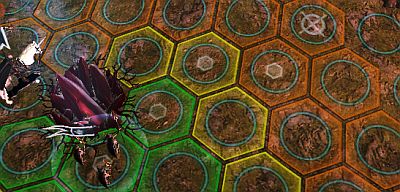
Action points reflect how much, a given unit, can do in battle. It starts with 3 action points, unless the number has been reduced by, e.g. counter-attacking the opponent during his turn. During the battle, the hexes that you can move to have been marked with three colors: green, yellow and orange. Moving to a given field reflects how many action points your unit will have left after the move is made. And so, this may be either, 1, 2 or 3 points. These points are used up on attacking, e.g. archers can usually fire three arrows at a time.. However, if you move them to the yellow area, they will only be able to fire 2. Another issue is that the units deal more damage at short range, which is why it is a good idea to calculate which pays better. Action points renew at the beginning of each turn, unless they have been used up during the opponent's turn, e.g. on the abovementioned counter-attack.
Counter-attack
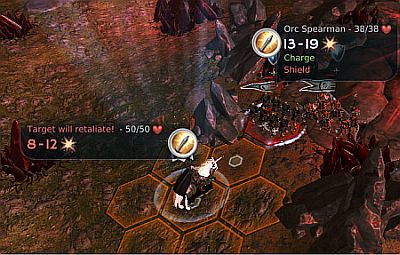
The units that have the right number of action points, when they are attacked with a melee attack, can counterattack, if they have been attacked from the specific direction. This means that they will counter only frontal attacks. This means that the units that have been attacked from a flank, will perform no counterattack, but they will turn towards the attacker and, future attacks, if they actually take place, will be countered. Turning your units in the appropriate direction, at the end of the turn, may be very helpful, because this will allow them to counter the majority of opponent's attacks. Some of the skills influence counterattacks, e.g. the First Strike allows the defending party attack first.
Occasional attack
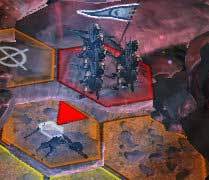
While moving your units in front of the parties of the opponent's, you can perform an occasional attack, which costs them 1 action point. The point of the attack is that, if a unit moves sufficiently close (1 hex in front of the hex that the unit is facing) to another unit, which can perform melee attacks, damage will be dealt. These attacks cannot be countered. Pay attention to the small, red arrows that symbolize this attack - if the route of your units crosses such a field, this means that you will be attacked if you make a move.
Area of Effect

Some of the skills can influence, not only, one selected unit, but an area, with all of the units staying in that area. Such an area has been marked with violet borders. all of the units staying within that area will be affected by the spell. Remember that you should not keep your units close to each other, in case that the opponent wants to use such an AoE spell, because you can then lose several parties in, one go, then. Use this to your advantage and, whenever you see the opportunity to attack multiple enemy units, at a time, it is a good idea to do that. You should remember that not only the opponent's units are affected by such a spell, but also the allied ones, to which the spells deal damage also.
Spellcasting
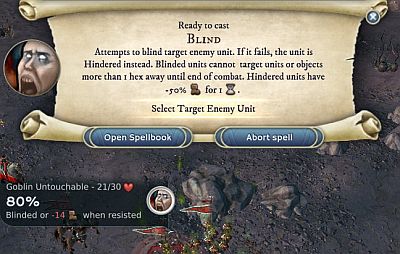
IN battle, it is possible to cast combat spells, which may influence both your units and the enemy units, and sometimes on all the units in the battlefield. You can cast only one spell per turn (one leader=one spell), and they are available at the moment at which a leader stays in the battlefield. It is also possible to cast spells when there is no leader around but, the cost of such a spell, in Casting Points is doubled then. Spells can often tip the scales of victory to your side, which is why it is worthwhile to make sure that you obtain them by means of researching or by upgrading your leader, as well as to ensure his presence in more important and more demanding battles.
Flanking
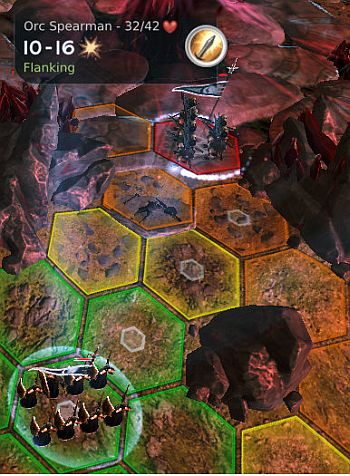
The attacks that are not performed from the front, but from the side are flanking attacks. The greatest upside of these attacks is that they deal more damage. The unit that is attacked in this way will not be able to counter the first attack but, it will be able to counter the following attacks, unless it is affected by paralysis, stunned, etc. As much as possible, try to attack in such a way, so as to flank the opponent, while remembering about not exposing yourself to his attacks in the following turn.
Cover
On the tactical maps, there often are some obstacles that you can hide behind. Thanks to them, all of the ranged attacks deal less damage, if they are performed from behind the obstacle.
Escape
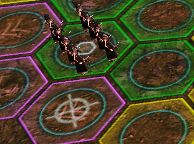
As the attacking party, you can leave the field with selected units, while still in the battle. To do that, you need to move your units to the hexes around the edges of the arena, which are outlined in violet. This is a useful option, if you have miscalculated your chances to win a battle, or you do not want to lose your units, in the face of the opponent's advantage.
You are not permitted to copy any image, text or info from this page. This site is not associated with and/or endorsed by the developers and the publishers. All logos and images are copyrighted by their respective owners.
Copyright © 2000 - 2025 Webedia Polska SA for gamepressure.com, unofficial game guides, walkthroughs, secrets, game tips, maps & strategies for top games.
